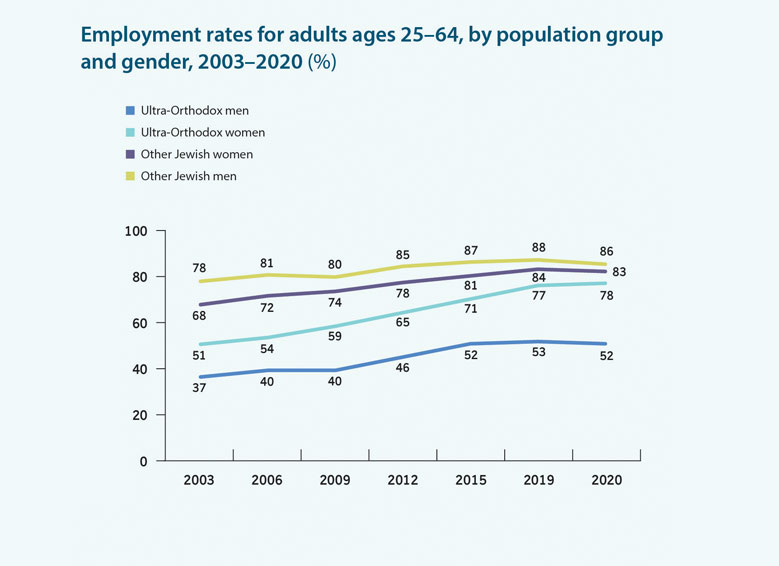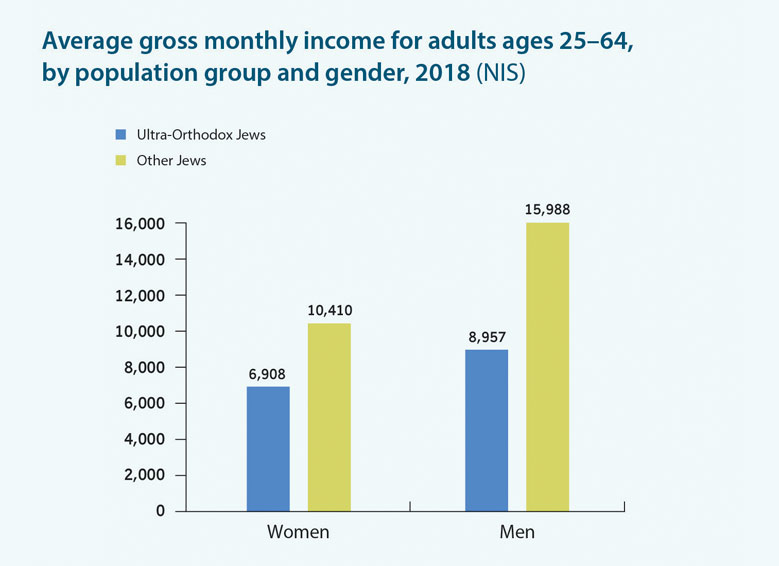Employment
Chap. 4
One of the central topics of public debate regarding the place of the ultra-Orthodox community in Israeli society, is the issue of employment, and particularly-the low rate of employment among ultra-Orthodox men. The largest discrepancy between the ultra-Orthodox population and the rest of the Jewish population in this regard was found in 2002, when only around one-third of ultra-Orthodox men, and only just over half of ultra-Orthodox women were employed. Between 2003 and 2015, employment rates in the ultra-Orthodox population rose significantly among both men and women, due to a combination of changing needs in the community, along with public policy that supported the entry of ultra-Orthodox Israelis into the labor market. As a result, more than half of ultra-Orthodox men (52%) and more than three-quarters of women (78%) are currently employed. However, it should be noted that the employment rate for ultra-Orthodox men has remained largely static since 2015.

The work situation of the ultra-Orthodox population cannot be described solely on the basis of employment rates. Another key component is income. The average income of ultra-Orthodox workers is 59% of that of other Jewish workers. Among other factors, this difference can be attributed to the fewer weekly hours worked by ultra-Orthodox workers and lower compensation, which is also a result of these workers’ concentration in lower-paying occupations.

The findings of the 2021 Statistical Report indicate that the distribution of occupations in which ultra-Orthodox women are employed is becoming more similar to that among other Jewish women, as revealed in a decline in the percentage of ultra-Orthodox women working in the field of education and a rise in the percentage working in hi-tech. Continuation of this trend is likely to have an impact in the long term on per-capita income, and consequently on the standard of living of ultra-Orthodox households. At the same time, no similar trend is evident among ultra-Orthodox men.











